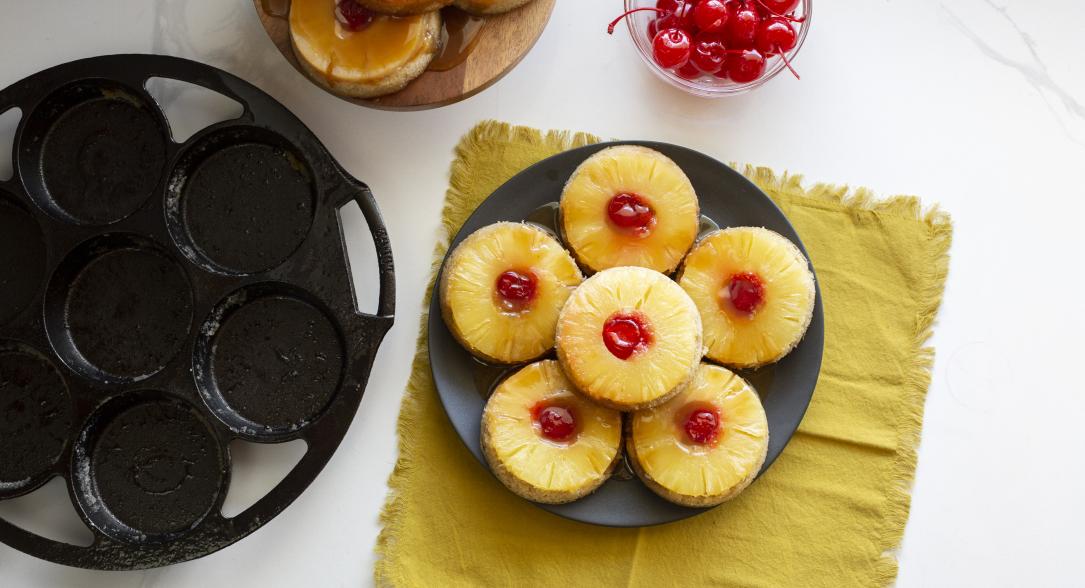Why Cast Iron Is Great for Upside-Down Cakes
Cast iron may not be on the ingredient list for your upside-down cake, but it’s the perfect piece of cookware to experiment with this classic dessert. Here are three reasons you should use cast iron when you bake this classic treat, along with some tips to keep in mind.
Technique
Delicious upside-down cakes traditionally involve melting butter in the bottom of your skillet or baking pan. The heft of cast iron helps your butter melt easily, but without burning. This butter will act as the grease for your pan, so make sure to coat the sidewalls after it has melted. A well-buttered pan and the naturally seasoned cast iron surface will prevent the topping layer of the cake from sticking—more on that later. For mini upside-down cakes, the mini cake pan is just the right size. For a traditionally sized cake, reach for a 10.25 inch skillet or 12 inch skillet.
Caramelization
Cast iron’s great heat retention creates the optimal environment for your toppings to caramelize to perfection, adding another dimension of “yum” to your cakes. Using canned pineapples is easy because they are uniformly cut in the perfect size, but using fresh works, too! But you’re not limited to just pineapple. Use whatever is in season—berries or peaches during the summer, apples or figs during the fall, cranberries or oranges for winter, and rhubarb in the spring. Don’t worry about your fruit looking sad either—the caramelization process will renew forgotten produce that’s on the wrinkly side. And if you need some ideas, try our Gingerbread Pear Upside-Down Cake, Upside-Down Peach Cornbread Cakes, or Apple Tarte Tatin.
Easy Maneuverability
Whether you bake your cake in a cast iron mini cake pan or a skillet, the sturdy handles make it easy to turn your cake (or cakes) out, keeping everything glistening and beautiful until it’s time to dive in. Testing to see if your upside-down cake is finished baking can be tricky. The cake’s topping will be sticky, so your toothpick might not come out clean, even if the cake is done. Try to aim for a spot between your fruit toppings. If you’re really one for precision, use a probe thermometer. When the center of the cake has reached between 205 and 210 degrees Fahrenheit, it’s ready.
Allow your cake to cool in the pan for about 5 minutes on a wire rack. This helps the cake to release from the sidewalls, but don’t wait too long because the sugar will set, making it more difficult to remove. As an extra precaution, run a knife around the rim of the cake before gently turning it out. Baking isn’t always perfect, but that’s the beauty of upside-down cakes—they’re forgiving. If some of your topping sticks to the pan, scoop it out and place it on top of the cake. No one will ever know, we promise!

